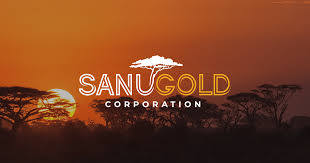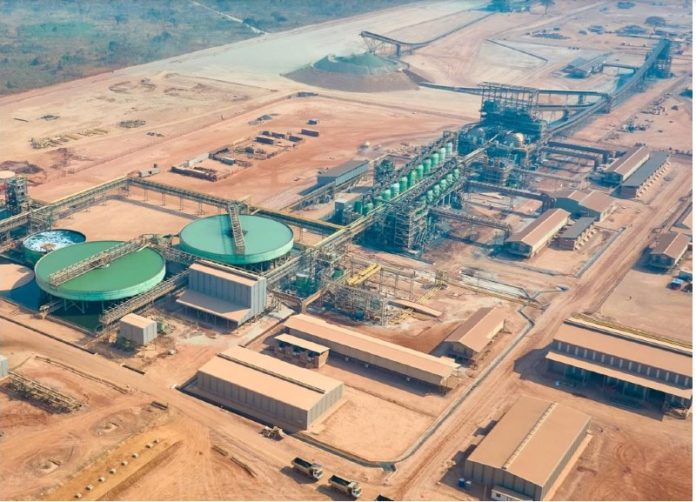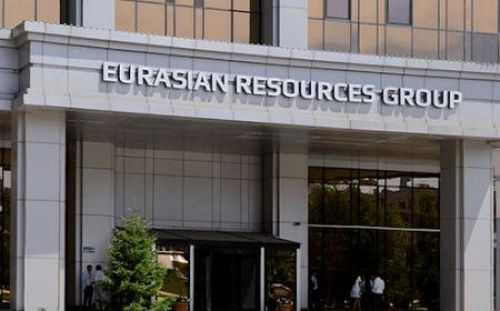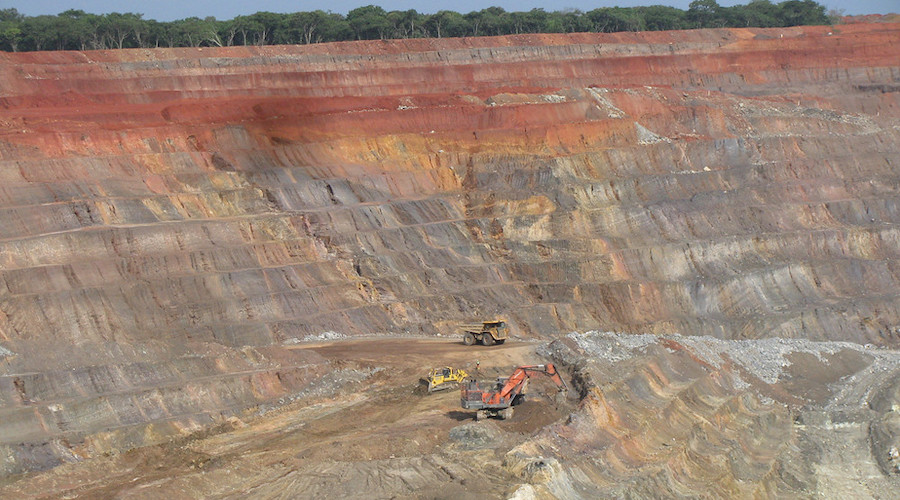Base Metals

The mine dumps of Silicon Valley

If re-elected president in November, Donald Trump has vowed to appoint the first individual of South African descent to the helm of a federal agency. The shattering of this particular glass ceiling would see the world’s richest man, Tesla boss Elon Musk, “tasked with conducting a complete financial and performance audit of the entire federal government and making recommendations for drastic reforms.” Musk checks all the right populist boxes: a self-proclaimed “free speech absolutist,” staunch economic protectionist, tough on immigration, not to mention a die-hard Tolkien buff, and prolific spreader of race-baiting misinformation. But is there a specifically South African ingredient in this otherwise generic far-right cocktail?
By now, many have remarked upon the surprisingly high number of white South Africans among dot-com moguls turned conservative crusaders against liberalism. Four of the founders of PayPal—the “company that made the modern internet”—have some connection to Southern Africa. Of the four, only one has made any effort to project impartiality in the run-up to the US presidential election. He also happens to be the one whose grandfather was South Africa’s longest-serving foreign minister under apartheid.
For some commentators on the left, these figures’ South Africanness is key to understanding their motives in business and their affinity with Trump in politics. Musk’s ambitions to colonize Mars have been likened to the Great Trek, the northward migration of Dutch-speaking settlers aimed at escaping the Cape’s British colonial administration, not least its prohibition of slavery. Parallels have been drawn between Musk’s and fellow PayPal mafioso Peter Thiel’s authoritarian approaches to corporate governance and the apartheid regime’s white supremacist baaskap (“bossism”) ideology.
But these are decidedly flimsy bases upon which to draw a connection between these latter-day robber barons and their erstwhile homeland. They rely upon either analogy or psychoanalytic speculation—the notion that some unspecified formative experience of white supremacy has deeply and irrevocably shaped their worldviews. Moreover, there’s more than a whiff of the “frontier tradition” in these accounts. This was an approach to South Africa’s past that interpreted apartheid as the triumph of the ideology of the atavistic, race-obsessed, and land-hungry Boer frontiersman over that of enlightened, forward-looking British colonial administrators, industrialists, and missionaries. According to the liberal historians who advanced the thesis, this had resulted in a perverse and stunted form of industrialization and modernization in South Africa.
This interpretation of the origins of apartheid was progressively dismantled by left revisionist historians in the 1970s and 1980s. These critics argued that the roots of apartheid were not to be sought in racial attitudes inherited from premodern frontier conflicts, but in the exploitation of migrant labor in the mines, on commercial farms, and in industry. The revisionists argued that there was a difference in type but not in kind between the segregationist state that emerged in South Africa and those that emerged in other industrial capitalist societies in the early 20th century. Taking a leaf out of the revisionist book, we can trace the origins of globally influential white South African professionals to the simultaneous rise of corporate capitalism and ideologies of social reform at the turn of the 20th century.
Johannesburg, California
The connection between the West Coast of the United States and South Africa spans more than a century. Consult a map of California, and you will find the towns of Randsburg and Johannesburg (“Jo-burg” to its local residents) on the western edge of the Mojave Desert. These toponyms are not simply an homage to the region’s shared history of gold mining. They also attest to the exchange of expertise and manpower between the two. For if the massive mining houses that emerged on the Witwatersrand at the turn of the 20th century were owned by the plutocratic Randlords, they were overwhelmingly managed by Californian engineers.
In the 1890s, the gold standard fell into crisis as the supply of bullion failed to keep pace with the growth of the American economy. Roughly 2,000 Californian engineers flooded to the Transvaal as part of an effort to overcome the chronic shortage of gold. They brought with them not only their technical expertise but also the politics of the American West. “Vigilance committees” soon sprang up to administer justice in the lawless mining town of Johannesburg. Some historians have even come to question whether the design of the Jameson raid—the botched plot against Paul Kruger’s South African Republic hatched by a coalition of British colonial administrators and American engineers—owes more to 19th-century filibustering in central America than to British imperialism.
However, as the historian Keith Breckenridge has argued, it was in the realm of industrial organization that the American engineers would leave their most lasting imprint on South Africa’s political economy. The unique mining conditions in the Transvaal—the presence of deep-level reserves and low-grade ore—presented formidable financing and technical challenges. The engineers looked to the American railway corporations as a model for profitable operations in the Rand. These corporations had surmounted the formidable capital requirements and daunting managerial challenges associated with continental-wide operations by ushering in a revolutionary new corporate form of capitalism.
The principal element of this organizational revolution was the separation of ownership and management. This allowed the raising of capital that was beyond the investment capacity of any individual by utilizing the bond markets of New York. It also allowed the corporations to deal with the geographical scale of their operations, separating local and central authority. The sheer scope and scale of the railway corporations also required standardization across several domains: a single rail gauge across the network, nationally demarcated time zones, legally stipulated equipment specifications, state-sanctioned accounting practices, and the compilation of detailed, standardized financial reports on every aspect of the workings of the corporation. Standardization facilitated the calculation of systems-wide statistics, which soon became the cornerstone of corporate management.
The importation of the corporate model of capitalism into the South African mining industry was not without its challenges. The corporate revolution not only entailed a transformation of the internal organizational structure of firms but also crucially relied upon a specific form of regulatory state. Paul Kruger’s administration in the Transvaal was too corrupt and inefficient, and its elites too beholden to preindustrial agrarian ideologies, lifestyles, and kinship obligations, to facilitate the emergence of the kind of centralized and effectively coercive state apparatus required for the flowering of the corporate form of capitalism. It was only after the defeat of the Boer republics in the South African War that a reformist zeal emerged within the Transvaal state to match that of the Californian engineers and their new corporate ideology.
Sir Alfred Milner, the man charged with reconstructing South Africa after the war, was typical of early 20th-century anglophone reformers who championed a “progressive new world.” An arch social-imperialist and product of the same turn-of-the-century institutions that produced the New Liberal and Fabian architects of the British welfare state, Milner disdained the Afrikaner republic’s inefficiencies and aversion to progress.
Milner began by moving the high commission from Colonial Cape Town to the Transvaal, the center of the Boer republics and the Witwatersrand gold rush. There, Milner and his Oxford-trained “Kindergarten” sought to kit out what Winston Churchill described as “Monte Carlo on top of Sodom and Gomorrah” with the rudiments of state administration, public transport, housing, and sanitation. But these were no run-of-the-mill technocrats. Operating in the aftermath of a brutal, near-total war, these administrators, unlike their counterparts in the metropole, encountered no meaningful opposition to the harder edge of their social vision.
The Kindergarten’s social reforms were decidedly eugenicist in theory and thoroughly segregationist in practice. Social reforms were understood to have particular racially defined beneficiaries. Addressing a banquet held in his honor in Johannesburg in 1902, Milner explained that “A great Johannesburg … means a British Transvaal.” His idea was to use the gold mines as an engine of wealth generation that would stimulate the entire economy and encourage mass British immigration. There, a municipal revolution would transform Johannesburg into a modern residential, industrial, and commercial city and encourage permanent British settlement. The end goal was the eventual replacement of the cosmopolitan, migrant, and—in the eyes of the Kindergarten—unfit population of the prewar years with a stable British workforce; a virile imperial race. If clear beneficiaries of social reforms were defined, other groups would be singled out as either barriers to those reforms or as means to them. Black people fell definitively into these latter categories.












